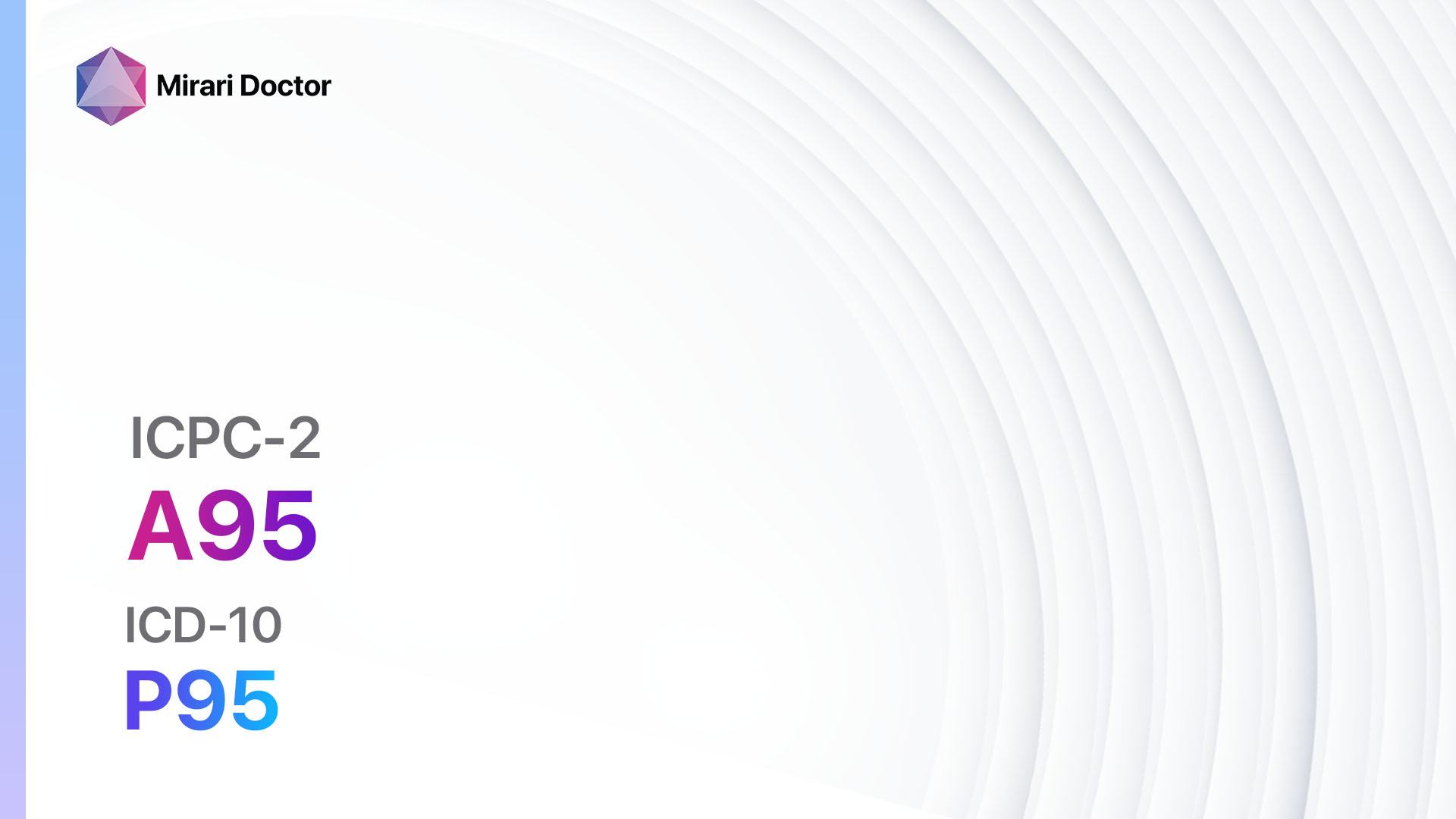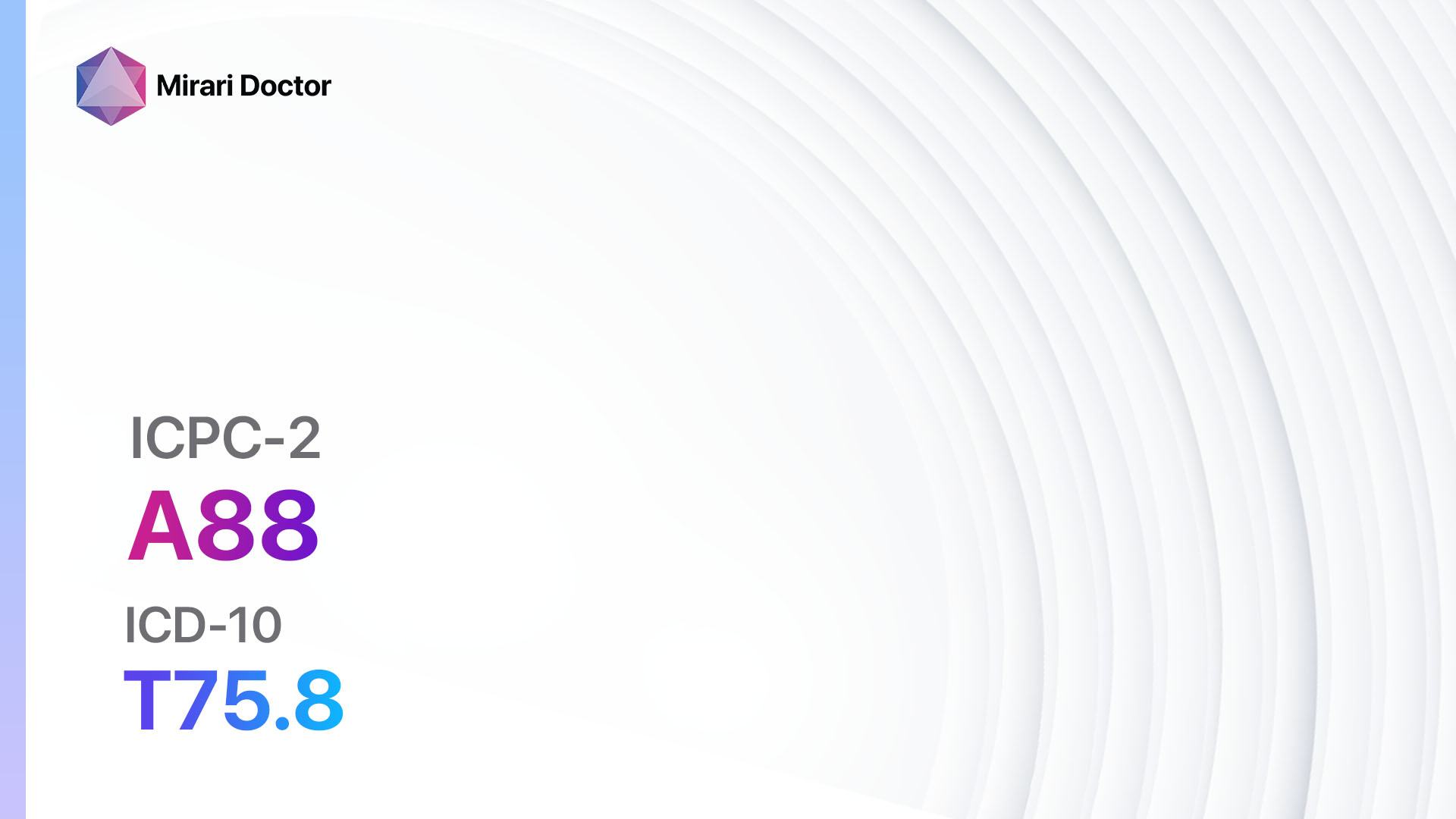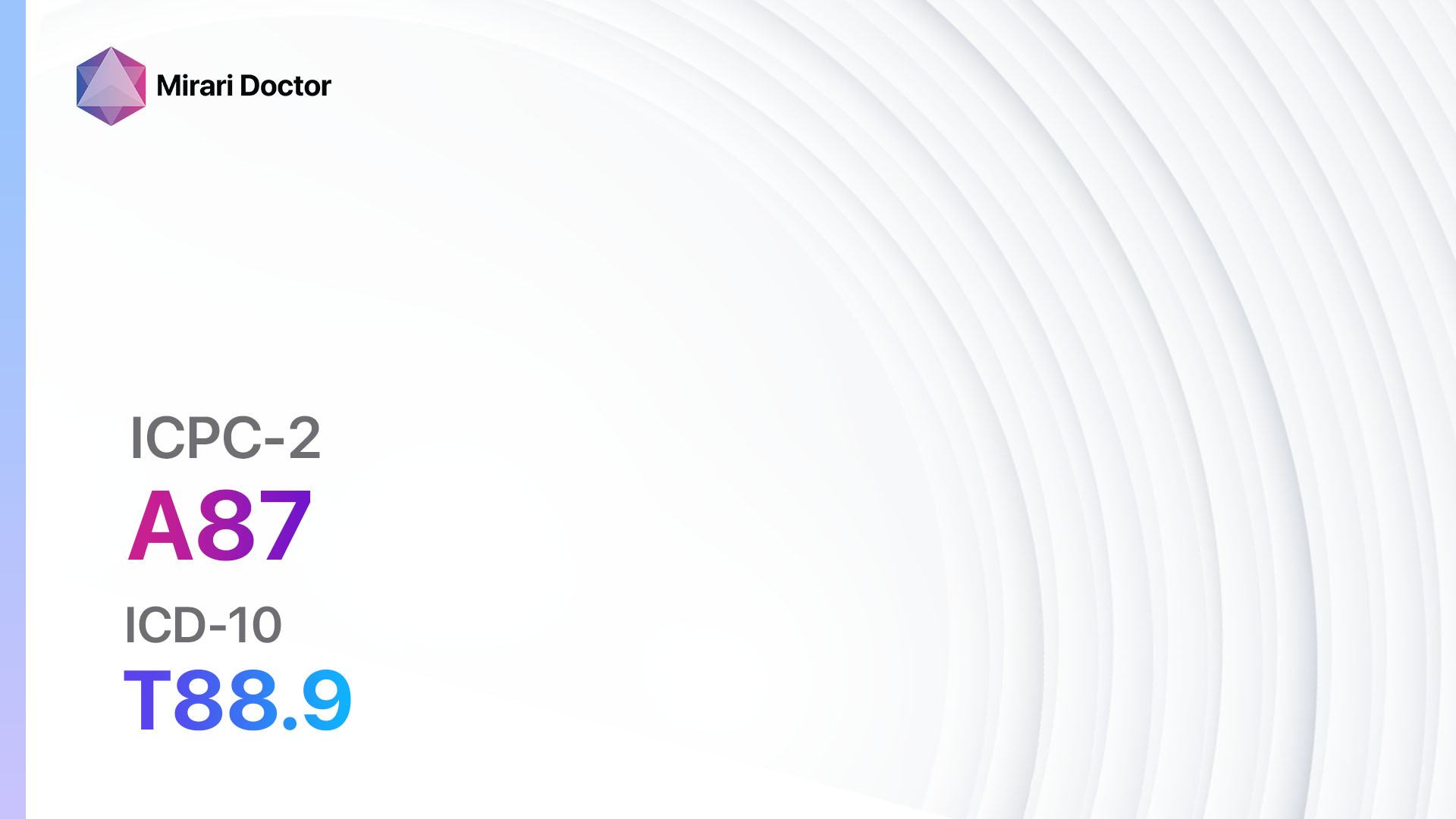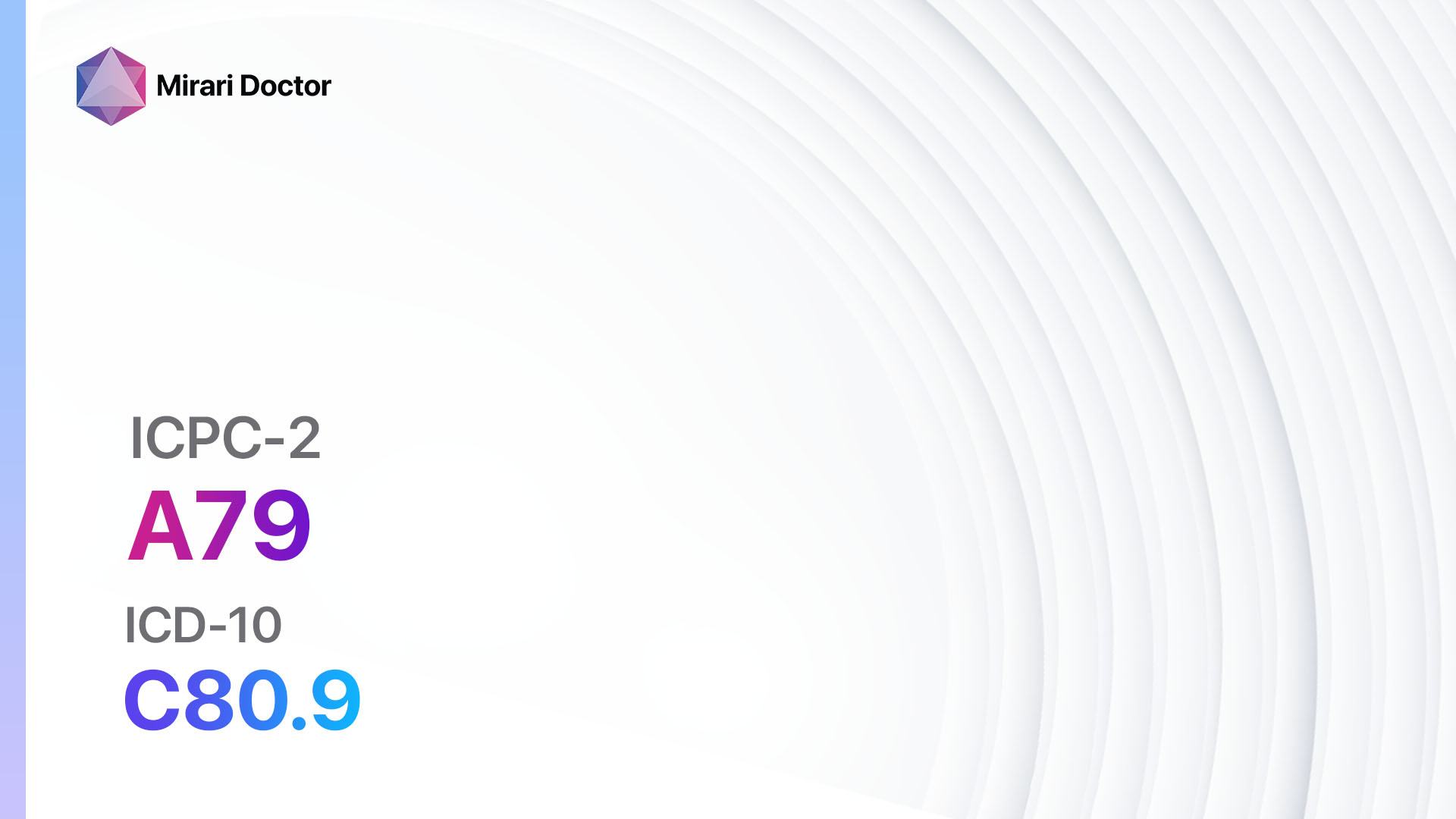
Introduction
Poisoning by medical agents refers to the harmful effects caused by the ingestion, inhalation, or injection of medications or other medical substances[1]. This condition can range from mild to severe, depending on the type and amount of agent involved[2]. The aim of this guide is to provide healthcare professionals with a comprehensive overview of the diagnosis and management of poisoning by medical agents.
Codes
- ICPC-2 Code: A84 Poisoning by medical agent[3]
- ICD-10 Code: T50.9 Poisoning by other and unspecified drugs, medicaments and biological substances[4]
Symptoms
- Nausea and vomiting: Patients may experience persistent nausea and vomiting, which can lead to dehydration[5].
- Abdominal pain: Severe abdominal pain may be present, indicating damage to the gastrointestinal tract[5].
- Dizziness and confusion: Patients may exhibit signs of central nervous system depression, such as dizziness and confusion[5].
- Respiratory distress: In severe cases, patients may experience difficulty breathing or respiratory failure[5].
- Irregular heart rate: Poisoning by certain medical agents can cause arrhythmias or abnormal heart rates[5].
- Skin rash or hives: Allergic reactions to medical agents may manifest as skin rashes or hives[5].
Causes
- Accidental ingestion: Children or adults may accidentally ingest medications or medical substances[6].
- Overdose: Intentional or unintentional overdose of medications can lead to poisoning[6].
- Drug interactions: Certain combinations of medications can result in toxic effects[6].
- Allergic reactions: Some individuals may have allergic reactions to specific medical agents[6].
Diagnostic Steps
Medical History
- Gather information about the patient’s current medications, including prescription and over-the-counter drugs[7].
- Ask about any recent changes medication regimen or dosage[7].
- Inquire about any known allergies or previous adverse reactions to medications[7].
- Determine if the patient has a history of substance abuse or intentional self-harm[7].
Physical Examination
- Assess vital signs, including heart rate, blood pressure, and respiratory rate[8].
- Examine the patient’s skin for any rashes or hives[8].
- Evaluate the patient’s mental status and level of consciousness[8].
- Perform a thorough abdominal examination to check for tenderness or distension[8].
Laboratory Tests
- Complete blood count (CBC): To assess for any abnormalities, such as anemia or infection[9].
- Comprehensive metabolic panel (CMP): To evaluate liver and kidney function, electrolyte levels, and blood glucose[9].
- Coagulation studies: To assess the patient’s clotting ability and rule out any bleeding disorders[9].
- Urine toxicology screen: To detect the presence of specific drugs or substances in the patient’s system[9].
- Serum drug levels: To measure the concentration of specific medications in the patient’s blood[9].
Diagnostic Imaging
- Chest X-ray: To evaluate the patient’s lung function and rule out any respiratory complications[10].
- Electrocardiogram (ECG): To assess the patient’s heart rhythm and detect any abnormalities[10].
- Abdominal ultrasound: To visualize the gastrointestinal tract and assess for any structural abnormalities[10].
- CT scan or MRI: To evaluate the extent of organ damage or identify any foreign bodies[10].
Other Tests
- Gastric lavage: In cases of recent ingestion, gastric lavage may be performed to remove the toxic substance from the stomach.
- Activated charcoal administration: Activated charcoal can be given to absorb the toxic substance and prevent its absorption into the bloodstream.
- Toxicology consultation: In complex cases, a toxicology specialist may be consulted to provide further guidance on diagnosis and management.
Follow-up and Patient Education
- Schedule follow-up appointments to monitor the patient’s progress and assess for any long-term complications.
- Provide education on medication safety, including proper storage and disposal of medications.
- Discuss the importance of seeking immediate medical attention in case of accidental ingestion or overdose.
- Offer resources for counseling or support groups for patients dealing with substance abuse or intentional self-harm.
Possible Interventions
Traditional Interventions
Medications:
Top 5 drugs for Poisoning by medical agent:
- Activated charcoal:
- Cost: $10-$50 per dose.
- Contraindications: Patients with a compromised airway or gastrointestinal obstruction.
- Side effects: Nausea, vomiting, constipation.
- Severe side effects: Aspiration pneumonia, bowel obstruction.
- Drug interactions: May decrease the absorption of certain medications.
- Warning: Should be administered within 1-2 hours of ingestion for optimal effectiveness.
- Naloxone (opioid antagonist):
- Cost: $20-$40 per dose.
- Contraindications: Patients with hypersensitivity to naloxone.
- Side effects: Nausea, vomiting, increased blood pressure.
- Severe side effects: Seizures, cardiac arrhythmias.
- Drug interactions: May precipitate withdrawal symptoms in opioid-dependent individuals.
- Warning: Should be administered promptly in cases of opioid overdose to reverse respiratory depression.
- Flumazenil (benzodiazepine antagonist):
- Cost: $50-$100 per dose.
- Contraindications: Patients with a history of seizures or hypersensitivity to flumazenil.
- Side effects: Nausea, dizziness, headache.
- Severe side effects: Seizures, cardiac arrhythmias.
- Drug interactions: May precipitate withdrawal symptoms in benzodiazepine-dependent individuals.
- Warning: Should be used with caution in patients with a history of seizures.
- N-acetylcysteine (acetaminophen antidote):
- Cost: $10-$20 per dose.
- Contraindications: Patients with a known hypersensitivity to N-acetylcysteine.
- Side effects: Nausea, vomiting, abdominal pain.
- Severe side effects: Anaphylaxis, bronchospasm.
- Drug interactions: None reported.
- Warning: Should be administered within 8-10 hours of acetaminophen ingestion for optimal effectiveness.
- Sodium bicarbonate (alkalinizing agent):
- Cost: $5-$10 per dose.
- Contraindications: Patients with metabolic alkalosis or electrolyte imbalances.
- Side effects: Nausea, vomiting, fluid overload.
- Severe side effects: Metabolic alkalosis, hypokalemia.
- Drug interactions: May interact with other medications that alter acid-base balance.
- Warning: Should be used with caution in patients with renal impairment.
Alternative Drugs:
- Flumazenil (benzodiazepine antagonist): Used in cases of benzodiazepine overdose.
- Physostigmine (cholinesterase inhibitor): Used in cases of anticholinergic toxicity.
- Digoxin immune fab (digoxin-specific antibody fragments): Used in cases of digoxin toxicity.
- Glucagon (hyperinsulinemia antidote): Used in cases of beta-blocker or calcium channel blocker overdose.
- Methylene blue (methemoglobinemia antidote): Used in cases of methemoglobinemia.
Surgical Procedures:
- Gastric lavage: In cases of recent ingestion, gastric lavage may be performed to remove the toxic substance from the stomach. Cost: $1,000-$5,000.
- Hemodialysis: In cases of severe poisoning or renal failure, hemodialysis may be necessary to remove the toxic substance from the bloodstream. Cost: $10,000-$20,000 per session.
Alternative Interventions
- Activated charcoal: Can be used in alternative medicine practices to detoxify the body. Cost: $10-$50 per dose.
- Intravenous vitamin C: Some alternative practitioners claim that high-dose vitamin C can help eliminate toxins from the body. Cost: $100-$200 per session.
- Chelation therapy: Controversial treatment involving the administration of chelating agents to remove heavy metals from the body. Cost: $75-$150 per session.
- Hyperbaric oxygen therapy: Involves breathing pure oxygen in a pressurized chamber to increase oxygen delivery to tissues. Cost: $200-$300 per session.
- Herbal supplements: Some herbs, such as milk thistle and dandelion root, are believed to support liver detoxification. Cost: Varies depending on the specific supplement.
Lifestyle Interventions
- Avoidance of toxic substances: Educate patients on the importance of avoiding exposure to toxic substances and practicing proper safety measures.
- Healthy diet and hydration: Encourage patients to maintain a balanced diet and drink plenty of fluids to support overall health and detoxification.
- Regular exercise: Physical activity can help improve circulation and promote the elimination of toxins through sweat.
- Stress management: Chronic stress can impair the body’s detoxification processes, so stress reduction techniques, such as meditation or yoga, may be beneficial.
- Adequate sleep: Sufficient sleep is essential for the body to repair and regenerate, including the detoxification processes.
It is important to note that the cost ranges provided are approximate and may vary depending on the location and availability of the interventions.
Mirari Cold Plasma Alternative Intervention
Understanding Mirari Cold Plasma
- Safe and Non-Invasive Treatment: Mirari Cold Plasma is a safe and non-invasive treatment option for various skin conditions. It does not require incisions, minimizing the risk of scarring, bleeding, or tissue damage.
- Efficient Extraction of Foreign Bodies: Mirari Cold Plasma facilitates the removal of foreign bodies from the skin by degrading and dissociating organic matter, allowing easier access and extraction.
- Pain Reduction and Comfort: Mirari Cold Plasma has a local analgesic effect, providing pain relief during the treatment, making it more comfortable for the patient.
- Reduced Risk of Infection: Mirari Cold Plasma has antimicrobial properties, effectively killing bacteria and reducing the risk of infection.
- Accelerated Healing and Minimal Scarring: Mirari Cold Plasma stimulates wound healing and tissue regeneration, reducing healing time and minimizing the formation of scars.
Mirari Cold Plasma Prescription
Video instructions for using Mirari Cold Plasma Device – A84 Poisoning by medical agent (ICD-10:T50.9)
| Mild | Moderate | Severe |
| Mode setting: 1 (Infection) Location: 3 (Kidney, Liver & Spleen) Morning: 15 minutes, Evening: 15 minutes |
Mode setting: 1 (Infection) Location: 3 (Kidney, Liver & Spleen) Morning: 30 minutes, Lunch: 30 minutes, Evening: 30 minutes |
Mode setting: 1 (Infection) Location: 3 (Kidney, Liver & Spleen) Morning: 30 minutes, Lunch: 30 minutes, Evening: 30 minutes |
| Mode setting: 2 (Wound Healing) Location: 3 (Kidney, Liver & Spleen) Morning: 15 minutes, Evening: 15 minutes |
Mode setting: 2 (Wound Healing) Location: 3 (Kidney, Liver & Spleen) Morning: 30 minutes, Lunch: 30 minutes, Evening: 30 minutes |
Mode setting: 2 (Wound Healing) Location: 3 (Kidney, Liver & Spleen) Morning: 30 minutes, Lunch: 30 minutes, Evening: 30 minutes |
| Mode setting: 3 (Antiviral Therapy) Location: 3 (Kidney, Liver & Spleen) Morning: 15 minutes, Evening: 15 minutes |
Mode setting: 3 (Antiviral Therapy) Location: 3 (Kidney, Liver & Spleen) Morning: 30 minutes, Lunch: 30 minutes, Evening: 30 minutes |
Mode setting: 3 (Antiviral Therapy) Location: 3 (Kidney, Liver & Spleen) Morning: 30 minutes, Lunch: 30 minutes, Evening: 30 minutes |
| Total Morning: 45 minutes approx. $7.50 USD, Evening: 45 minutes approx. $7.50 USD |
Total Morning: 90 minutes approx. $15 USD, Lunch: 90 minutes approx. $15 USD, Evening: 90 minutes approx. $15 USD, |
Total Morning: 90 minutes approx. $15 USD, Lunch: 90 minutes approx. $15 USD, Evening: 90 minutes approx. $15 USD, |
| Usual treatment for 7-60 days approx. $105 USD – $900 USD | Usual treatment for 6-8 weeks approx. $1,890 USD – $2,520 USD |
Usual treatment for 3-6 months approx. $4,050 USD – $8,100 USD
|
 |
|
Use the Mirari Cold Plasma device to treat Poisoning by medical agent effectively.
WARNING: MIRARI COLD PLASMA IS DESIGNED FOR THE HUMAN BODY WITHOUT ANY ARTIFICIAL OR THIRD PARTY PRODUCTS. USE OF OTHER PRODUCTS IN COMBINATION WITH MIRARI COLD PLASMA MAY CAUSE UNPREDICTABLE EFFECTS, HARM OR INJURY. PLEASE CONSULT A MEDICAL PROFESSIONAL BEFORE COMBINING ANY OTHER PRODUCTS WITH USE OF MIRARI.
Step 1: Cleanse the Skin
- Start by cleaning the affected area of the skin with a gentle cleanser or mild soap and water. Gently pat the area dry with a clean towel.
Step 2: Prepare the Mirari Cold Plasma device
- Ensure that the Mirari Cold Plasma device is fully charged or has fresh batteries as per the manufacturer’s instructions. Make sure the device is clean and in good working condition.
- Switch on the Mirari device using the power button or by following the specific instructions provided with the device.
- Some Mirari devices may have adjustable settings for intensity or treatment duration. Follow the manufacturer’s instructions to select the appropriate settings based on your needs and the recommended guidelines.
Step 3: Apply the Device
- Place the Mirari device in direct contact with the affected area of the skin. Gently glide or hold the device over the skin surface, ensuring even coverage of the area experiencing.
- Slowly move the Mirari device in a circular motion or follow a specific pattern as indicated in the user manual. This helps ensure thorough treatment coverage.
Step 4: Monitor and Assess:
- Keep track of your progress and evaluate the effectiveness of the Mirari device in managing your Poisoning by medical agent. If you have any concerns or notice any adverse reactions, consult with your health care professional.
Note
This guide is for informational purposes only and should not replace the advice of a medical professional. Always consult with your healthcare provider or a qualified medical professional for personal advice, diagnosis, or treatment. Do not solely rely on the information presented here for decisions about your health. Use of this information is at your own risk. The authors of this guide, nor any associated entities or platforms, are not responsible for any potential adverse effects or outcomes based on the content.
Mirari Cold Plasma System Disclaimer
- Purpose: The Mirari Cold Plasma System is a Class 2 medical device designed for use by trained healthcare professionals. It is registered for use in Thailand and Vietnam. It is not intended for use outside of these locations.
- Informational Use: The content and information provided with the device are for educational and informational purposes only. They are not a substitute for professional medical advice or care.
- Variable Outcomes: While the device is approved for specific uses, individual outcomes can differ. We do not assert or guarantee specific medical outcomes.
- Consultation: Prior to utilizing the device or making decisions based on its content, it is essential to consult with a Certified Mirari Tele-Therapist and your medical healthcare provider regarding specific protocols.
- Liability: By using this device, users are acknowledging and accepting all potential risks. Neither the manufacturer nor the distributor will be held accountable for any adverse reactions, injuries, or damages stemming from its use.
- Geographical Availability: This device has received approval for designated purposes by the Thai and Vietnam FDA. As of now, outside of Thailand and Vietnam, the Mirari Cold Plasma System is not available for purchase or use.
References
- Mowry, J. B., Spyker, D. A., Brooks, D. E., McMillan, N., & Schauben, J. L. (2015). 2014 Annual Report of the American Association of Poison Control Centers’ National Poison Data System (NPDS): 32nd Annual Report. Clinical Toxicology, 53(10), 962-1147.
- Gummin, D. D., Mowry, J. B., Spyker, D. A., Brooks, D. E., Osterthaler, K. M., & Banner, W. (2018). 2017 Annual Report of the American Association of Poison Control Centers’ National Poison Data System (NPDS): 35th Annual Report. Clinical Toxicology, 56(12), 1213-1415.
- WONCA International Classification Committee. (1998). ICPC-2: International classification of primary care. Oxford University Press, USA.
- World Health Organization. (2015). International statistical classification of diseases and related health problems (10th ed.).
- Olson, K. R. (Ed.). (2012). Poisoning & drug overdose (6th ed.). McGraw-Hill.
- Hoffman, R. S., Howland, M. A., Lewin, N. A., Nelson, L. S., & Goldfrank, L. R. (Eds.). (2014). Goldfrank’s toxicologic emergencies (10th ed.). McGraw-Hill Education.
- Brent, J., Burkhart, K., Dargan, P., Hatten, B., Megarbane, B., Palmer, R., & White, J. (Eds.). (2013). Critical care toxicology: diagnosis and management of the critically poisoned patient. Springer Science & Business Media.
- Erickson, T. B., Thompson, T. M., & Lu, J. J. (2007). The approach to the patient with an unknown overdose. Emergency Medicine Clinics of North America, 25(2), 249-281.
- Osterloh, J. D. (2004). Laboratory testing in the treatment of poisoning. Primary Care: Clinics in Office Practice, 31(3), 653-673.
- Wananukul, W., Kaojarern, S., & Pongpanich, S. (2004). Imaging in organophosphate poisoning. Toxicology Reviews, 23(1), 15-20.
Related articles
Made in USA



























